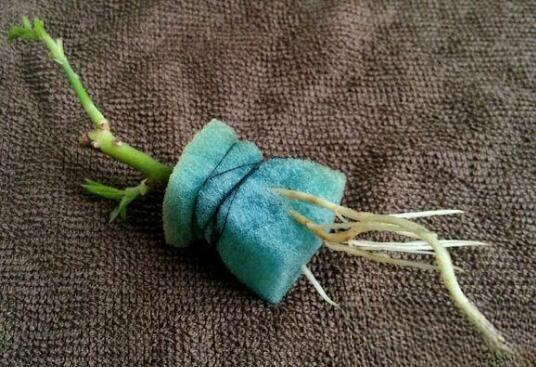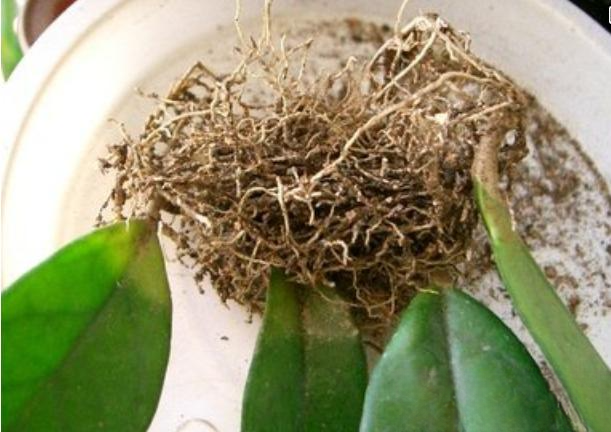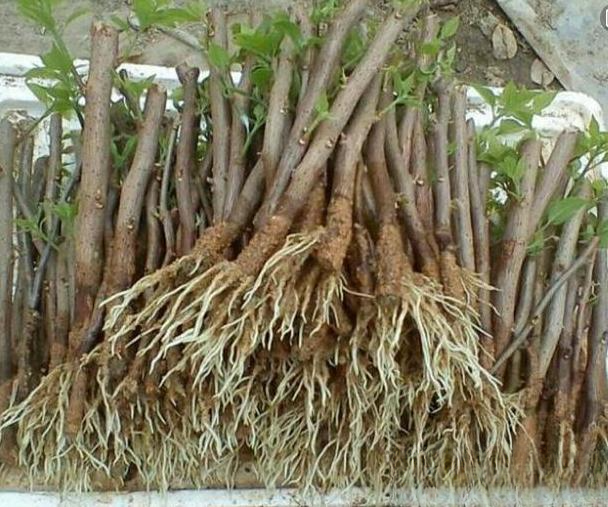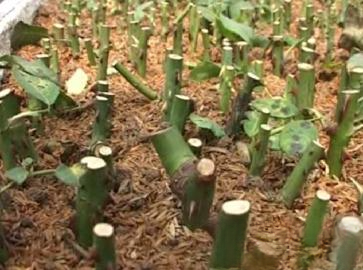Complete guide to flower cutting propagation

According to the different cutting materials, cutting conditions, cutting period and cutting purpose, there are many cutting methods, which are summarized as follows:
1. According to the material of the cuttings: there are branch cuttings, leaf bud cuttings, leaf cuttings, and root cuttings.
1) Branch cutting: The method of using branches of plants as propagation materials for cuttings is called branch cutting, which is the most commonly used method. Among them, using the tender parts of herbaceous plants as cutting materials is called herbaceous cutting; using green tender branches of woody plants that have not yet completely lignified as materials is called tender branch cutting or green branch cutting; using old branches of woody plants that have been fully essentialized as materials is called hard branch cutting or mature branch cutting; using dormant branches for cuttings is called dormant branch cutting; using relatively young buds that have not yet elongated as materials is called bud cutting; using the tip of the branch for cuttings is called tip cutting; using branches with the tip cut off for cuttings is called normal cutting or tip-removed cutting, which is also the most common cutting method.
2) Leaf bud cutting: Using leaves with axillary buds for cuttings, which can also be seen as a leaf-with-single-bud cutting between leaf cutting and branch cutting. This method can be used when the material is limited but more seedlings are desired. This method is often used for cuttings of Indian rubber trees, camellia, dahlia, and green radish. For tree species such as red pine, the top of the young branches is cut off to promote the activity of the adventitious buds at the base of the needles to form short branches, which are then cut off together with the needles for cuttings. This is called leaf bundle cutting, which is also a type of leaf bud cutting.
3) Leaf cutting: A method of using leaves as materials for cuttings. This method can only be applied to species that can produce adventitious buds and adventitious roots from leaves, such as Sansevieria, Begonia, Gloxinia, etc. Most plants that can be leaf-cut have thick leaf stalks, leaf veins or thick leaves.

The following are the commonly used leaf cutting methods:
Flat laying method: also known as full leaf sowing. First, cut off the petiole, then lay the leaves flat on the sand surface, fix them with bamboo needles, and make the bottom close to the sand surface. If the roots are planted, young plants can grow from the edge of the leaves. For begonias, young plants grow from the base of the leaves or the veins.
Direct insertion method: also known as leaf-stub insertion. Insert the petiole into the sand, with the leaf blade standing on the sand surface, and adventitious buds will form at the base of the petiole. For leaf insertion of large rock petioles, small bulbs will first form at the base of the petiole, and then roots and buds will form.
Scale cutting: Lily scales can be peeled off for cuttings. After the lily blooms in July, the bulbs will rise. After drying for a few days, the scales are peeled off and inserted into wet sand. After 6-8 weeks, small bulbs will grow at the base of the scales.
Leaf cutting: also known as cutting cutting. This method is to cut a leaf into several pieces and cut them separately, so that each leaf forms an adventitious bud. For example, Sansevieria, Gloxinia, Peperomia, etc. can be propagated by this method.
Root cutting: Some plants can produce adventitious buds on their roots to form young plants, such as wintersweet, persimmon, peony, peony, blood-replenishing grass and other species with thick roots, which can be root-cut. It is usually carried out during transplanting in autumn or early spring. The method is to dig out the roots of the plants, cut them into 4-10 cm root segments, and bury them horizontally in the substrate. You can also bury one end of the root slightly above the ground and bury it vertically.
2. According to the cutting season: spring cutting, summer cutting, autumn cutting and winter cutting.
1) Cuttings: Cuttings are carried out in the spring season. Old branches or dormant branches are mainly used as materials. After surviving, the growth period is long within the same year. It is suitable for various plants, so this method is widely used. Cuttings can be used for cuttings stored in winter.
2) Summer cutting: It is carried out in the rainy season when the air is relatively humid in summer, and mostly uses green branches or green branches of the current year. Summer cutting is particularly suitable for evergreen .
3) Autumn transplanting: Generally carried out from September to October, during which time the branches have fully grown, hardened, have strong rooting ability, and have a certain degree of corrosion resistance. However, since winter is approaching after rooting, it is impossible to have a large growth in the current year, and it can only lay the foundation for vigorous growth in the second year. Perennial herbaceous plants are generally suitable for autumn transplanting.
4) Winter cutting: It is usually carried out under artificial heating conditions in winter, such as in a greenhouse or plastic temperature fence. It can be carried out during the entire dormant period of the plant from late autumn to early spring. During this period, the plant has a strong ability to resist decay, but it also takes a long time to root. According to comparative tests in recent years, the survival rate of cuttings in plastic greenhouses in northern winter is the highest.

3. According to the cutting medium: there are soil cuttings, sand cuttings, perlite and vermiculite cuttings, sphagnum moss cuttings, water cuttings and mold cuttings.
1) Soil cutting: Using soil as cutting medium is the most common method. The cutting effect varies greatly with different soil types, among which sandy soil and sandy loam have better effects.
2) Sand cutting: Use sand as the cutting medium. Uniform fine sand is better.
3) Perlite and vermiculite cuttings: Perlite, vermiculite and other mineral materials are used as cutting substrates. This kind of substrate has good air permeability and ice retention, is suitable for cuttings of various plants, and has the best effect.
4) Sphagnum moss cuttings: Use sphagnum moss with strong water retention as cutting material.
Suitable for the propagation of tender cuttings and other special cuttings.
5) Water cuttings: Suitable for plants that can easily take root in water, such as willow, rose, oleander, dahlia, dragon blood tree, etc., which can be propagated by water cuttings, but the water should be changed frequently to keep the water clean. Sand can also be put at the bottom of the water to fix the cuttings.
6) Mist cutting: Fix the cuttings indoors or in a container and supply water or nutrients through spraying. This is a special method of cuttings, which has the characteristics of no oxygen deficiency and easy observation of the growth status.

4. According to the position of cuttings: vertical insertion, oblique insertion, horizontal insertion and deep insertion.
1) Vertical insertion: Insert the cuttings vertically into the substrate, also known as vertical insertion. This is a commonly used method that is easy to grow and manage the cuttings.
2) Oblique insertion: Insert the cuttings obliquely into the substrate. Since the cuttings are exposed to the ground less, they are not easy to dry; the base is buried shallowly in the soil layer, the temperature and air conditions in the soil are good, the cuttings are easy to root, but the seedlings are easy to be crooked.
3) Horizontal insertion: Plant the cuttings roughly horizontally (i.e. bury the cuttings). Dormant branches without leaves can be completely buried in the soil, or the small ends or both ends can be slightly exposed above the soil surface. Plant cuttings can be buried shallowly in sphagnum moss. This method makes it easier for new shoots to take root near the base.
4) Deep cutting: suitable for large cuttings. The method is: remove the lower branches and leaves of the large cuttings of 0.6-1.5 meters, and cut the base on both sides. Dig a 0.6-1 meter deep trench, arrange the cuttings in sequence in the trench, fill 20 cm of new soil around the lower cut, tamp it down, irrigate it, and then fill it with topsoil.
5) In spring, the soil thickness should be half of the trench depth, and in autumn, the soil should be filled to the ground surface. Since the lower cut is located in the new soil, it is not easy to rot. For example, deep cuttings can be used to cultivate large seedlings in a short period of time for coral trees, holly euonymus, figs, etc.
There are also potted cuttings. For cuttings that are not resistant to transplantation or have a small amount of material, they can also be directly inserted into flower pots, one plant per pot. After they survive, they can be cultivated directly without transplanting.